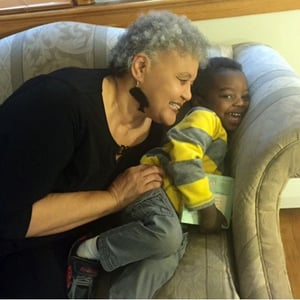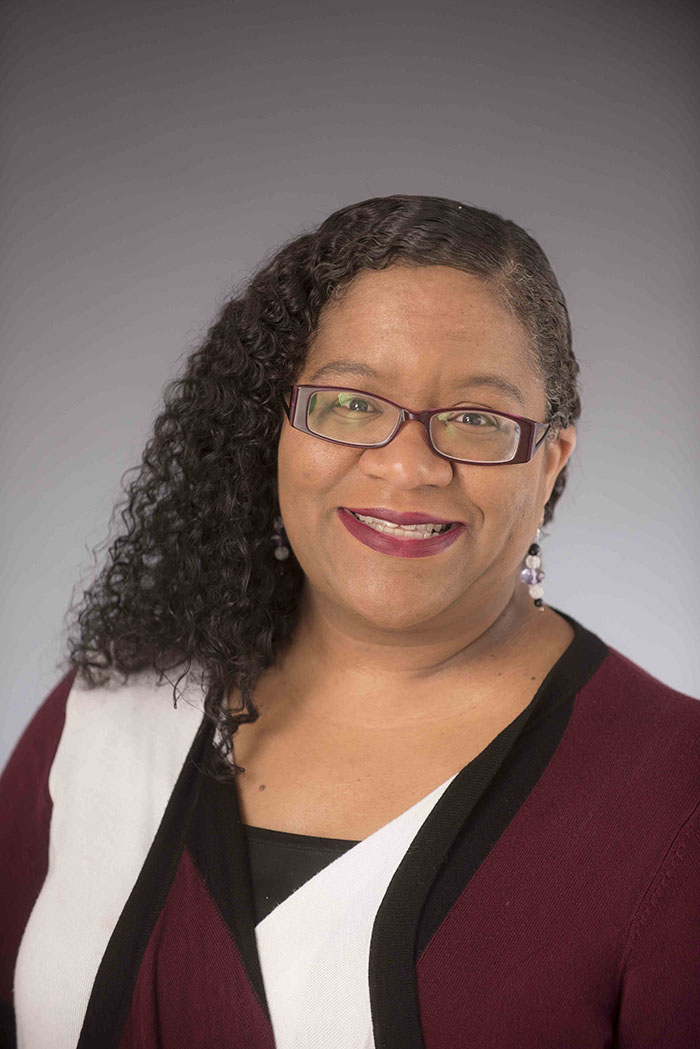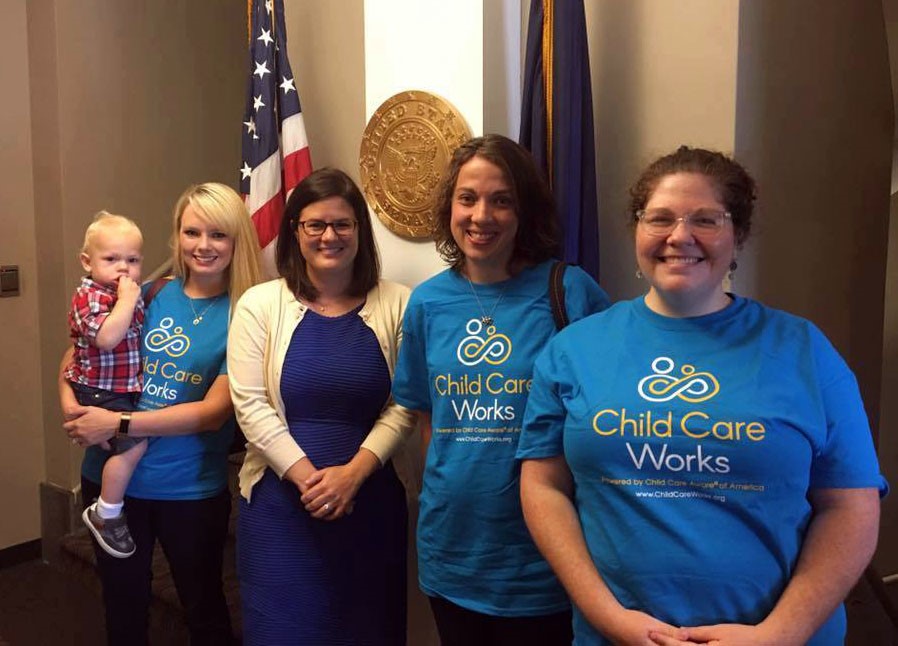 This past weekend was Grandparents Day. As I visited my parents with kids in tow, I realized how pivotal my parents have been in helping me raise my kids. My older two kids are tweens now, but when they were in child care my mom picked them up so my husband and I didn’t have to rush home from work before the “witching hour” (that’s 6 p.m. when the child care centers closed and charged you per minute you were late). And my youngest child, age 3, was cared for by my parents (both retired educators now) until he was 2 years old. No wonder my kids think my parent’s home is their home!
This past weekend was Grandparents Day. As I visited my parents with kids in tow, I realized how pivotal my parents have been in helping me raise my kids. My older two kids are tweens now, but when they were in child care my mom picked them up so my husband and I didn’t have to rush home from work before the “witching hour” (that’s 6 p.m. when the child care centers closed and charged you per minute you were late). And my youngest child, age 3, was cared for by my parents (both retired educators now) until he was 2 years old. No wonder my kids think my parent’s home is their home!
My parents helped because they wanted to help, and they would not have it any other way. However, some older couples aren’t prepared to take on the role of caregiver when they suddenly become responsible for a young grandchild. Our partner, Generations United coined the term “grandfamilies” to describe families where the children are cared for by their grandparents rather than their parents.
Grandfamilies—A Silent Growing Trend
In the U.S., approximately 7 million children are living with their grandparents, accounting for approximately 10 percent of children in this country. Family arrangements can take on a few different forms. Some households consist of two children, two parents, and grandparent(s)—in which the parents are the primary guardians. We would call this dynamic a co-resident situation. There are other households where the parents are not present and the grandparent(s) become the sole caretaker for the child. These households consist of custodial grandparents who are the primary provider for their grandchildren. There are currently 2.7 million custodial grandparents.
The Rise in Grandfamilies
More than 2.5 million children are currently being raised by their grandparents who step forward to care for them when their parents can’t. Grandparents who were a part of a grandfamily structure were mostly from the 40-49 age group, making it easier for them to raise children. Unfortunately, poverty has a direct correlation to the grandfamily structure. According to the U.S. Census Bureau, about 45 percent of children in a grandfamily lived with only a grandmother. Around 48 percent of those children living with just a grandmother live in poverty, and the same goes for 15 percent of children living with both grandparents. The 2008 recession specifically caused a spike in co-resident households. Many single mothers live in co-resident homes. The presence of a grandparent allows the mother to go to school and work to provide for her family. For the indigenous community, families will leave their children with grandparents and move to a city. This move allows the parent(s) to access opportunities not available on reservations and keeps the children connected to their culture and families.
Challenges Faced by Grandfamilies
Grandfamilies face many hardships that are overlooked because their presence is not widely visible. In some situations, grandparents are not mentally, physically or financially prepared to care for their grandchildren. Grandparents often step in as primary caretakers when parents are unable due to drug abuse, unemployment, child abuse/neglect, teen pregnancy, domestic violence, divorce, or parental immaturity. Children from these families can have emotional disturbances that custodial grandparents may not be mentally or emotionally prepared to deal with. Financially, grandparents are ready to enter retirement if they haven’t already. These grandfamilies often deal with financial hardships because their retirement savings often do not cover the costs of raising a child. This often leads many to re-enter the work force just to make ends meet; however, while at work, grandparent caregivers also need to find child care for their grandchildren. In addition, grandparents are often not aware of the benefits available to families in need. Many grandparents resort to informal arrangements because they do not qualify to apply for the resources. As these grandparents age, their health can deteriorate leaving them to manage disease along with caring for their grandchildren. A study revealed 33% of children in homes headed by grandparents lack health insurance compared to the 20% of children living with their parents who do not have health insurance.
Benefits of Grandfamilies
Although it’s not easy to care for grandchildren when you’re not prepared, there are many benefits to children living in grandfamilies. Compared to children in non-relative care, children in the care of relatives thrive. Experiencing increased stability with fewer placement and school changes decreases their emotional stress and promotes healthy development. Not only does it keep siblings together, but placement with relatives typically also allows children to continue to live in their cultural and familiar environments. In a report on children experiencing homelessness, instability was said to cause emotional distress and behavioral problems later in life. Higher levels of permanency prevent the grandchild from entering the foster care system. Children are less likely to run away when they live with a relative and are more likely to report they “always felt loved.”
We had the opportunity to speak to a household that has lived this grandfamily experience. Here’s their story.
Sasha’s Story
Since the 1970s, there has been a steady increase in the number of co-resident grandparents as a result of divorce, teen pregnancy, drug use, and incarceration. I talked to Sasha, a retired social worker who, along with her professor husband, takes care of her two special needs grandchildren. They became an unintentional grandfamily when her children lost custody of their children due to neglect, mental health challenges, and drug use. She lamented that even though she considers herself solidly middle class, at times they have struggled to care for her children. A report by the U.S. Census Bureau revealed that families with co-resident grandparent(s) were more likely to be on public assistance. They have been fortunate to receive support from Social Security to help with mental health and medical costs. In addition, her special needs grandchildren receive scholarships that have helped with the exorbitant costs of child care and school. Despite the challenges, Sasha is grateful to have these special children in her life. She knows she’s not alone but realizes that she is healthy and has time to navigate the system. She worries for other grandfamilies who aren’t as lucky and has become a fierce advocate for policies at the state and national level to help them.
Interested in Learning More About Grandfamilies?
Please join our partners Generations United for the release reception for the 2017 State of Grandfamilies report, In Loving Arms: the protective role of grandparents and other relatives in raising children exposed to trauma. Senators Susan Collins (R-ME) and Bob Casey (D-PA) will receive Generations United’s 2017 Grandfamilies Champion Award and offer brief remarks during the program, which will also feature highlights of the report and stories from grandfamilies. The event is Wednesday, September 13, 5:00-7:00 p.m. at the Dirksen Senate Office Building, Room G-1, Washington, DC. Register here
Additional Resources
- "Children Thrive in Grandfamilies," Generations United
- The State of Grandfamilies in America, Generations United
- Raising the Children of the Opioid Epidemic: Solutions and Support for Grandfamilies, Generations United






